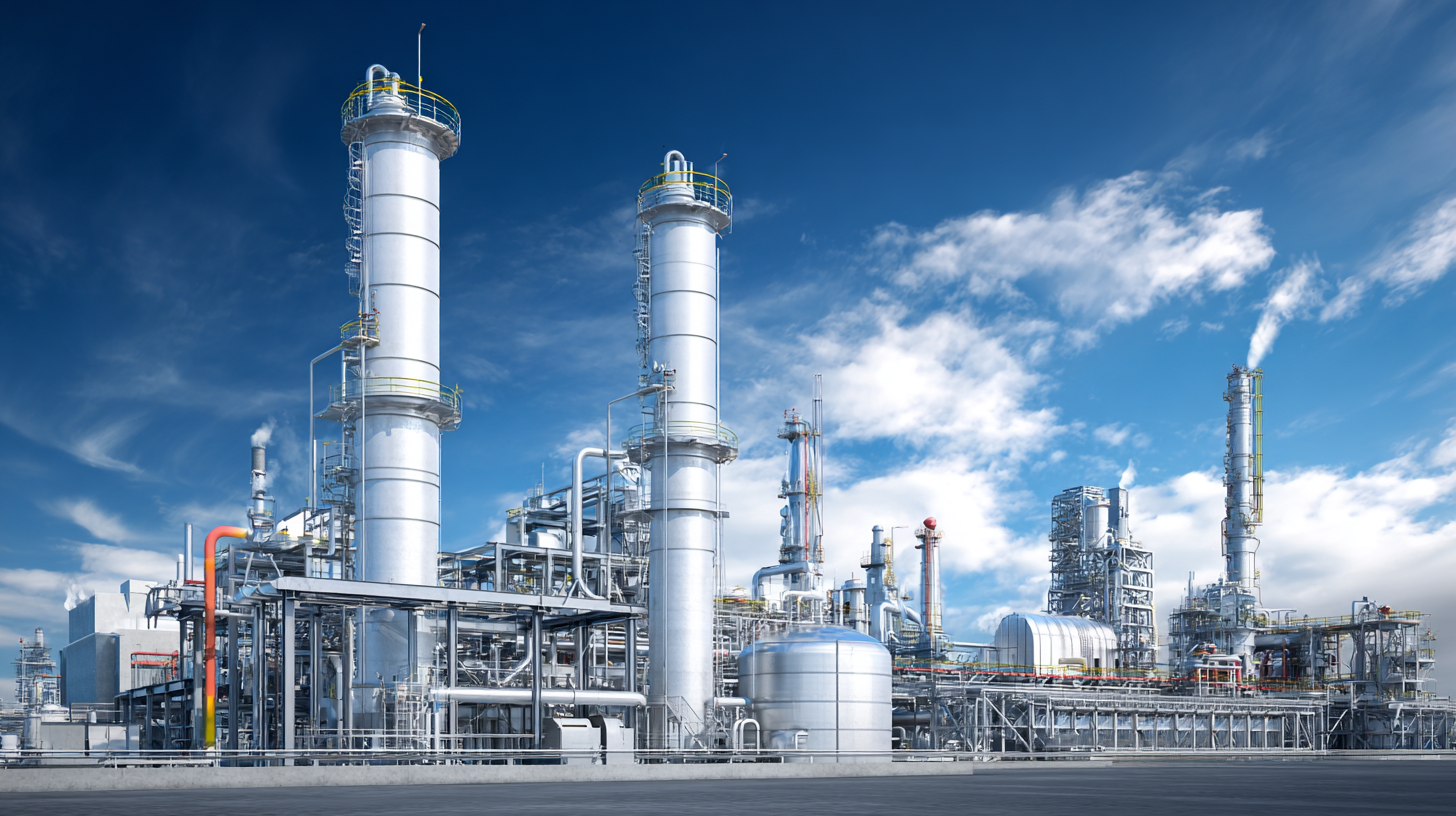
Careers
5 Best Practices for Chemical Industry Manufacturing Efficiency in 2023
In recent years, the chemical industry manufacturing sector has faced intensified pressures to enhance operational efficiency while maintaining sustainability and profitability. According to a report published by the Global Chemical Industry Council, the market is projected to grow by more than $3 trillion by 2025, highlighting the critical need for manufacturers to adopt best practices that streamline processes and reduce waste. As competition rises and environmental regulations become stricter, companies must leverage innovative strategies to remain viable and meet consumer demands.
Embracing technologies like digitalization and automation has shown promising results in improving efficiency across various manufacturing processes. The World Economic Forum indicates that manufacturers who implement advanced technologies can increase their productivity by up to 30%. Furthermore, optimizing supply chain management is crucial in an industry where delays can result in significant financial losses. By adopting these best practices in chemical industry manufacturing, businesses will not only enhance their operational effectiveness but also ensure sustainable growth in an evolving market landscape.
The following outlines the top five efficient practices that are anticipated to shape the chemical manufacturing sector in 2023 and beyond.

Innovative Automation Solutions for Streamlined Production Processes
In the chemical industry, embracing innovative automation solutions is pivotal for enhancing manufacturing efficiency in 2023. These technologies are transforming traditional production processes by integrating real-time data analytics and machine learning. Automation systems can now monitor production variables, predict maintenance needs, and optimize resource allocation, resulting in reduced downtime and increased output. By implementing such systems, companies can achieve higher precision in chemical formulations, leading to improved product quality and compliance with regulatory standards.
Moreover, automated systems facilitate seamless communication across various production stages. The integration of IoT devices allows for better tracking of materials and energy consumption, thereby minimizing waste and costs. This connectivity not only enhances operational transparency but also empowers employees by providing them with actionable insights to make informed decisions. As the chemical industry continues to evolve, leveraging these advanced automation solutions will be key to streamlining production processes and achieving sustainable growth.
Implementing Lean Manufacturing Techniques for Waste Reduction
Implementing Lean Manufacturing techniques in the chemical industry can significantly reduce waste and enhance overall efficiency. Lean principles focus on eliminating non-value-added activities, known as Muda, which can include overproduction, excess inventory, and defects. By systematically identifying these areas, companies can streamline their processes, leading to improved productivity and lower operational costs. The integration of Lean methodologies helps create a culture of continuous improvement, ensuring that all team members are engaged in identifying inefficiencies.
Moreover, understanding the concepts of Mura and Muri is essential for enhancing efficiency. Mura refers to variability in production processes, which can lead to instability and inefficiency. Addressing this variability is crucial for maintaining consistent output and quality. Muri, on the other hand, focuses on overburdening equipment and employees, leading to burnout and equipment failure. By applying Lean techniques, organizations can achieve a balanced workflow, reducing both physical and mental stress in the workplace, ultimately paving the way for a more efficient manufacturing environment in 2023 and beyond.
Harnessing Data Analytics to Enhance Operational Decision-Making
In 2023, the chemical industry is increasingly harnessing data analytics to enhance operational decision-making, reflecting a broader trend across manufacturing sectors. With the manufacturing market projected to grow from $78.9 billion in 2025 to $100.69 billion by 2032, achieving a compound annual growth rate of 45.11%, it is evident that the integration of advanced data analytics plays a crucial role in this transformation. As organizations adopt Industry 4.0 technologies, the penetration rates of IoT, AI, and cloud computing are driving a paradigm shift towards sophisticated data interactions that enhance analytical capabilities.
Moreover, the decision intelligence market is gaining momentum, combining data science, AI, and business intelligence to create a structured framework that transforms complex datasets into actionable insights. Reports indicate that the decision intelligence segment is instrumental in improving operational efficiency and risk management. As companies leverage predictive analytics and decision-making assistants, they find new opportunities to streamline processes, reduce waste, and enhance overall productivity, thereby positioning themselves advantageously in an increasingly competitive landscape.
Sustainable Practices to Improve Resource Management and Reduce Costs
The chemical industry faces significant pressure to enhance manufacturing efficiency while adopting sustainable practices. In 2023, integrating sustainable practices is essential for improving resource management and reducing costs. Companies are increasingly recognizing that optimizing their supply chains not only lowers expenses but also boosts operational effectiveness and customer satisfaction. By prioritizing supply chain optimization, businesses can streamline processes, minimize waste, and ensure a more sustainable approach to resource utilization.
Innovative technologies, particularly those harnessed by AI, play a crucial role in advancing sustainability efforts. The potential of AI to transform sectors like agriculture and energy management highlights its importance in fostering sustainable practices. For instance, smart grids can enhance energy efficiency, while precision agriculture optimizes water usage and reduces environmental impacts. As the global market for green solutions continues to grow, investing in such innovations will be key for organizations aiming to achieve sustainability goals and improve their bottom line amidst evolving regulatory pressures and environmental challenges.

Investing in Employee Training for Increased Productivity and Safety
Investing in employee training is a critical factor in enhancing productivity and safety within the chemical manufacturing industry. According to the National Association of Manufacturers (NAM), companies that prioritize workforce training experience productivity gains as high as 20%. In the chemical sector, where processes can be complex and hazardous, ensuring that employees are well-trained not only boosts operational efficiency but also mitigates risks associated with workplace accidents. The Occupational Safety and Health Administration (OSHA) reports that effective training programs can reduce workplace injury and illness rates by up to 40%, highlighting the direct benefits of investing in employee development.

Moreover, fostering a culture of continuous learning contributes to employee morale and retention, which are vital for maintaining a skilled workforce. A study by the Manufacturing Institute found that 73% of employees who receive regular training feel more engaged with their work and are more likely to remain with their employers. This engagement not only leads to higher productivity but also cultivates a safer work environment, as employees become more adept at identifying potential hazards and implementing safety protocols. As the chemical industry continues to evolve, prioritizing employee training will be paramount for companies seeking to enhance efficiency while ensuring the highest safety standards.


